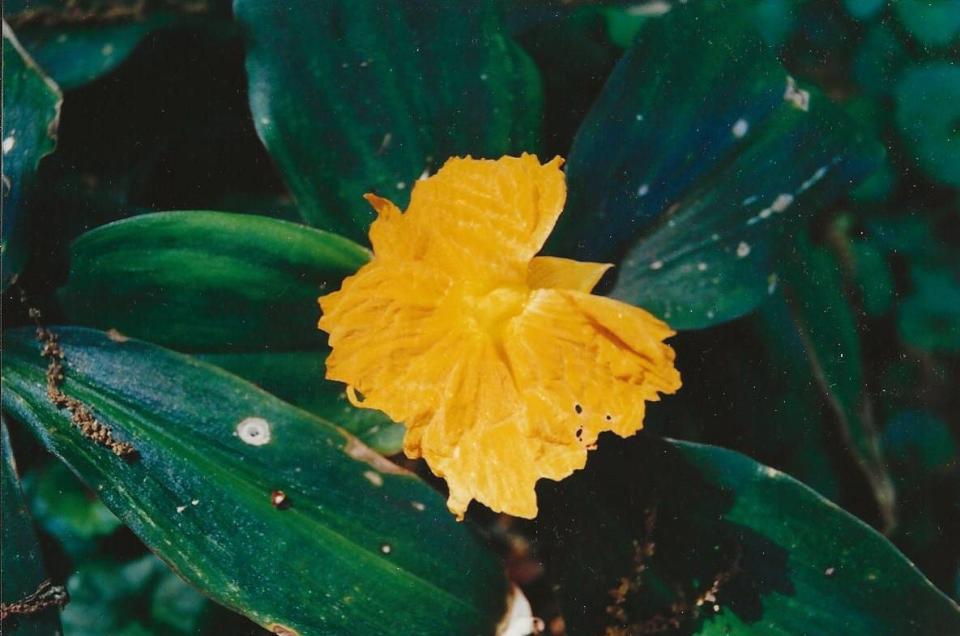Monkey puzzles and costus gingers: A pair of puzzling plants for your landscape
The majority of plants that qualify as horticultural oddities are modest in size: many can dwell happily on windowsills.
Among notable exceptions is monkey puzzle tree, aka devil’s tree. Up to 80 feet tall and 35 feet wide, this coniferous native of Chile is splendid and a little bit spooky.
A cousin of the more refined Norfolk Island pine, monkey puzzle features ascending branches that carry branchlets studded with stiletto-sharp foliage. Those leaves – theoretically, at least – would thwart monkeys trying to ascend a tree. And, according to folklore, monkey puzzles were planted around cemeteries to deter demons – hence the "devil’s tree" moniker.
I’m lucky enough to live in a neighborhood where several old monkey puzzles make their slightly sinister presence known in a dramatic way. They’re all situated on bright, well-drained sites and – because the species grows slowly – must be quite old.
Most members of this primitive coniferous species are dioecious – either male or female. But some individuals develop flowers of both sexes and can bear football-size fruit. The brown fruit, extremely dense, are heavy enough to be dangerous when they fall.
If an odd tree that’s cold hardy, wind resistant and pest proof appeals to you, small monkey puzzle trees (Araucaria araucana) are always available online. Because of their slow growth and adaptability, they make sturdy – albeit hazardous – houseplants and screen-room subjects.
If monkeys and devils are baffled by monkey puzzles, I’m just as confused by Costus gingers, especially ones that feature dramatically spiraled stems.
All Costus bear leaves spirally arranged on their stems, but it’s a mystery why certain species of this pantropical plant family develop markedly corkscrewed stems. What environmental advantage could possibly be conferred by having their inflorescences set atop bouncy stems?
Bear grass isn't a grass at all It's a versatile and hardy native for your garden
Among notably spiraled Costus gingers are African spiral flag (C. lucanusianus), with fragrant red, white and yellow flowers; red tower spiraled ginger (C. barbatus); and the crepe ginger (C. speciosus), which is available in several varieties.
Some friends have conjectured that spiral-stemmed plants can bob – not break – in strong winds, while others suggest harmful crawling insects might be discouraged by having to wend their way up such a circuitous path. Interestingly, I’ve found no evidence that botanists have pondered the reason spiral stems evolved.
Incidentally, the Costus plant family is under review and rearrangement by nomenclatural botanists, so some scientific names are changing.
Plant to ponder: Fiery costus

Fiery costus, popular for both landscape and container cultivation, is an evergreen rhizomatous perennial from Brazil. About 18 inches tall, this species (Costus cuspidatus) can flower year-round if winters are mild. Provide filtered light and organically enriched and mulched sites. Propagate by division and by planting tiny bulbs that form in leaf axils.
This article originally appeared on The Ledger: Horticultural oddities: A pair of puzzling plants for your landscape

